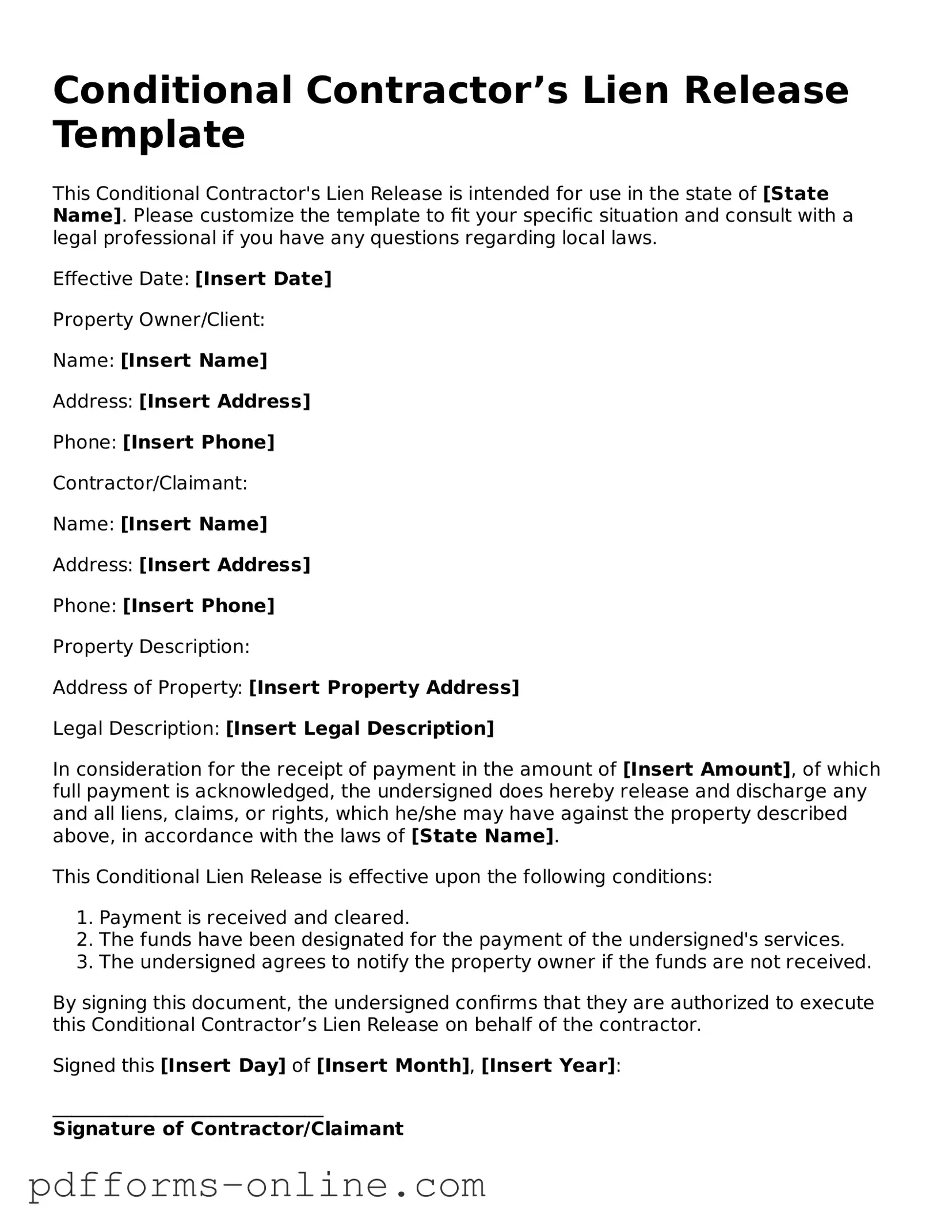Conditional Contractor’s Lien Release Template
This Conditional Contractor's Lien Release is intended for use in the state of [State Name]. Please customize the template to fit your specific situation and consult with a legal professional if you have any questions regarding local laws.
Effective Date: [Insert Date]
Property Owner/Client:
Name: [Insert Name]
Address: [Insert Address]
Phone: [Insert Phone]
Contractor/Claimant:
Name: [Insert Name]
Address: [Insert Address]
Phone: [Insert Phone]
Property Description:
Address of Property: [Insert Property Address]
Legal Description: [Insert Legal Description]
In consideration for the receipt of payment in the amount of [Insert Amount], of which full payment is acknowledged, the undersigned does hereby release and discharge any and all liens, claims, or rights, which he/she may have against the property described above, in accordance with the laws of [State Name].
This Conditional Lien Release is effective upon the following conditions:
- Payment is received and cleared.
- The funds have been designated for the payment of the undersigned's services.
- The undersigned agrees to notify the property owner if the funds are not received.
By signing this document, the undersigned confirms that they are authorized to execute this Conditional Contractor’s Lien Release on behalf of the contractor.
Signed this [Insert Day] of [Insert Month], [Insert Year]:
_____________________________
Signature of Contractor/Claimant
_____________________________
Printed Name of Contractor/Claimant
